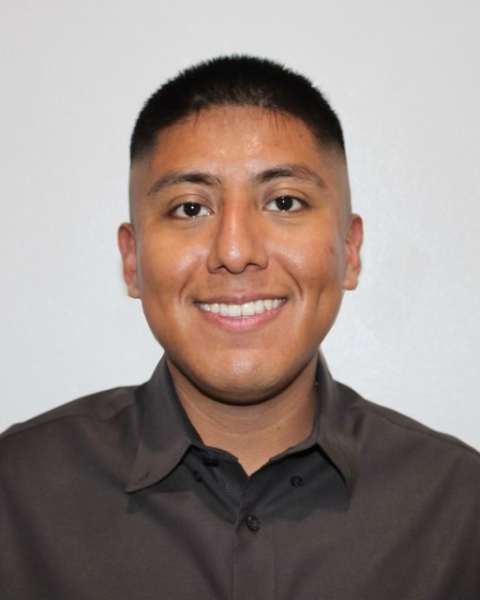PQA 10 - PQA 10 Head & Neck Cancer and Health Services Research/Global Oncology Poster Q&A
3616 - Commensal Bacteria Modulate the Immune Response to Radiation Therapy (RT) in a Murine Oral Cavity Model
Wednesday, October 2, 2024
10:30 AM - 11:45 AM ET
Location: Hall C
Screen: 27

Elvin Canseco, BS
Cedars-Sinai Medical Center
Los Angeles, CA
Presenter(s)
E. Canseco1, S. Stevens2, J. Viramontes1, I. Vasquez1, T. B. Dar1, A. T. Nguyen2, Z. S. Zumsteg3, A. S. Ho1, J. Mallen-St. Clair1, E. Walgama1, J. Moyers4, K. Scher1, S. L. Shiao5, and J. K. Jang2; 1Cedars-Sinai Medical Center, Los Angeles, CA, 2Department of Radiation Oncology, Cedars-Sinai Medical Center, Los Angeles, CA, 3Memorial Sloan Kettering Cancer Center, New York, NY, 4The Angeles Clinic & Research Institute, Los Angeles, CA, 5Cedars Sinai Medical Center, Los Angeles, CA
Purpose/Objective(s): Oral cavity squamous cell carcinomas (OCSCC) carry high mortality and treatment morbidity. Unlike other mucosal subsites of the head and neck where definitive radiation can cure most cases, RT of gross disease in OCSCC is often ineffective. Thus, there is a need to better understand patient factors that influence response to RT in OCSCC. One such factor influencing response to treatment is the microbiome of the oral cavity and gut. Prior work has shown that the intestinal microbiome shapes systemic immunity and dictates responses to chemotherapy, immunotherapy and RT. Therefore, we hypothesized that the bacterial microbiome is an essential component mediating the response to RT in a murine model of OCSCC. Materials/
Methods: Mouse oral squamous cell carcinoma (MOC1 and MOC2) cells were injected subcutaneously into C57BL/6 mice. Once tumors were palpable, the mice were treated with a broad-spectrum antibiotic (Abx) cocktail of ampicillin, cilastatin, imipenem and vancomycin to deplete intestinal bacteria. At tumor volumes of ~200 mm3, tumors were focally irradiated (8 Gy single fraction) using the X-RAD SmART+ platform with image guidance. Tumor volumes were compared using repeated measures two-way ANOVA, and survival curves were analyzed using the log-rank test. We use 16S microbiome sequencing, high-dimensional flow cytometry and single-cell RNA sequencing to identify and phenotypically characterize immune cells in the tumor microenvironment for irradiated tumors in the presence and absence of the bacterial microbiome.
Results: In the immune-sensitive OCSCC model (MOC1), treatment with Abx prior to RT decreased the efficacy of RT as shown by faster tumor growth (P<0.01) and worse survival (P<0.05) in mice. In the immune-insensitive OCSCC model (MOC2), treatment with Abx prior to RT did not influence tumor growth or survival. MOC1 tumors exhibited more RT-elicited anti-tumor immunity following RT compared to MOC2, which was abrogated with the addition of Abx.
Conclusion: The bacterial microbiome regulates anti-tumor responses following RT in OCSCC tumors that are immune responsive, but not in those that are immune insensitive. Therefore, strategies targeting the microbiome rely on understanding the complex interplay between the microbiome, tumor and the immune system.
Purpose/Objective(s): Oral cavity squamous cell carcinomas (OCSCC) carry high mortality and treatment morbidity. Unlike other mucosal subsites of the head and neck where definitive radiation can cure most cases, RT of gross disease in OCSCC is often ineffective. Thus, there is a need to better understand patient factors that influence response to RT in OCSCC. One such factor influencing response to treatment is the microbiome of the oral cavity and gut. Prior work has shown that the intestinal microbiome shapes systemic immunity and dictates responses to chemotherapy, immunotherapy and RT. Therefore, we hypothesized that the bacterial microbiome is an essential component mediating the response to RT in a murine model of OCSCC. Materials/
Methods: Mouse oral squamous cell carcinoma (MOC1 and MOC2) cells were injected subcutaneously into C57BL/6 mice. Once tumors were palpable, the mice were treated with a broad-spectrum antibiotic (Abx) cocktail of ampicillin, cilastatin, imipenem and vancomycin to deplete intestinal bacteria. At tumor volumes of ~200 mm3, tumors were focally irradiated (8 Gy single fraction) using the X-RAD SmART+ platform with image guidance. Tumor volumes were compared using repeated measures two-way ANOVA, and survival curves were analyzed using the log-rank test. We use 16S microbiome sequencing, high-dimensional flow cytometry and single-cell RNA sequencing to identify and phenotypically characterize immune cells in the tumor microenvironment for irradiated tumors in the presence and absence of the bacterial microbiome.
Results: In the immune-sensitive OCSCC model (MOC1), treatment with Abx prior to RT decreased the efficacy of RT as shown by faster tumor growth (P<0.01) and worse survival (P<0.05) in mice. In the immune-insensitive OCSCC model (MOC2), treatment with Abx prior to RT did not influence tumor growth or survival. MOC1 tumors exhibited more RT-elicited anti-tumor immunity following RT compared to MOC2, which was abrogated with the addition of Abx.
Conclusion: The bacterial microbiome regulates anti-tumor responses following RT in OCSCC tumors that are immune responsive, but not in those that are immune insensitive. Therefore, strategies targeting the microbiome rely on understanding the complex interplay between the microbiome, tumor and the immune system.
